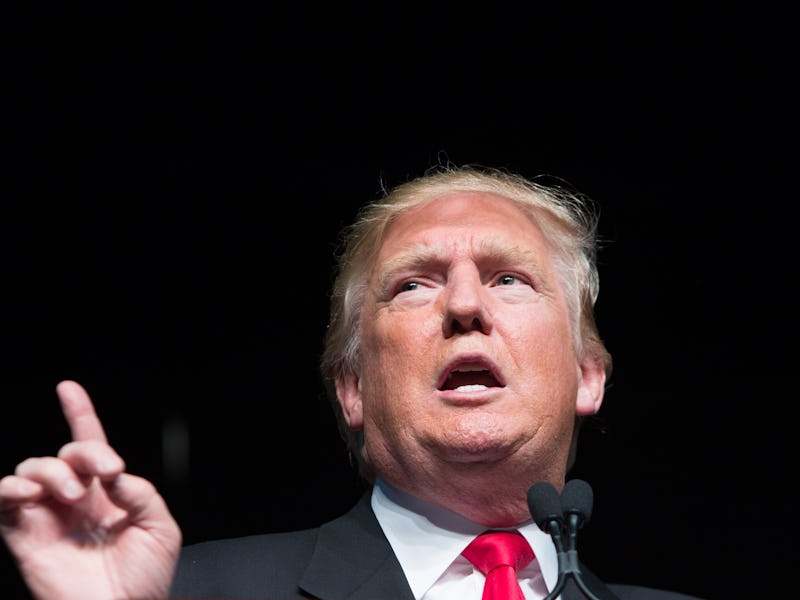
Republican frontrunner Donald Trump has said awful things about women and religion and immigration, but let’s focus for the moment on his physical flaws. Hair stylists and barbers across the land have driven themselves to the brink of the tangerine abyss trying to figure out what’s up, follicularly speaking, but that’s only half of the riddle. The other half of the riddle is his skin, which is orange. Why? Was it always thus?
Trump hasn’t answered the question so we’re forced to do some informed speculating. Let’s start by eliminating possibilities. Unfortunate lighting is out, given the consistency with which Trump appears more orange than everyone else. The lack of yellowed eye tissue, likewise, indicates jaundice is probably off the table. Carotenemia, the result of eating too many carrots or tomatoes that over-express pigment, does not seem consistent with Trump’s facial variance. What’s left, plausibly, is chemistry — what the Daily Mail crowed in October as a “patchy and overdone” spray tan.
We are, it would seem, talking about a spray tan. But how do spray tans work?
If you distill a spray tan to its essential element, all you’re left with is the compound dihydroxyacetone. This, the Food and Drug Administration notes, should not be “exposed to areas covered by mucous membranes including the lips, nose, and areas in and around the eye (from the top of the cheek to above the eyebrow) because the risks, if any, are unknown.” The Trump tan may be patchy, sure — but the mottled orange-to-pale gradient (particularly near the eyes) could very well be an intelligent adherence to FDA best practices.
Dihydroxyacetone is a sugar, and when it reacts with amino acids the result is a brown color. (In fact, the same process — called the Maillarid reaction — gives steaks that savory brown edge.) In a 1992 review of the chemical in the Journal of the American Academy of Dermatology, dermatologist Dr. Stanley Levy notes that no more than two to four days should go between reapplications for ideal results; if Trump’s color is changing more dramatically as he ages, perhaps that’s also because “rougher, hyperkeratotic skin takes up the color more unevenly, as does older skin or mottled or freckled skin.”
It’s an old — if somewhat plausible — tale that the stress of the Oval Office causes presidents go gray. Perhaps we’re witnessing a similar evolution, except with skin. And instead of graying, it’s the transformation from leaves on crisp fall day to a basketball that’s spent the winter outside.